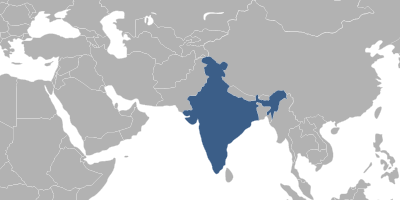India

See more information about:
International Country Code:
INTime Zone:
UTC/GMT +05:30Currency:
Indian rupee (INR)Industrial Design in India
Industrial Design in India
- Design fees
Fees associated with filing industrial design applications in India as well as other design fees are available in the fee calculator.
- Multiple design applications
An Indian industrial design application should contain one single design and refer to one class only.
- Filing requirements of a design application in India
The official languages of an Indian design application is English or Hindi.
To obtain a filing date, it is necessary to provide the Indian Patent Office with:
- the application stating name in full, address, nationality of the applicant, the name of the article, address for service in India;
- representation of the design preferably including front, back, left, right, top, bottom and perspective views of the article;
- Power of Attorney executed in original in favour of the authorized Agent;
- Priority Documents (if any);
- class and sub-class of goods for which registration is sought according to the Locarno Classification;
- payment of the prescribed filing fee.
If the Priority Document is not submitted at the time of filing of the application, it can be submitted with an extension of 1-3 months with the payment of the prescribed official fee. If the priority document is not in English, a certified English translation thereof is also required to be filed along with the priority document.
The term for filing a design application claiming conventional priority in India is six months from the priority date. This term is non-extendable.
The legalisation or notarization of the Power of Attorney is not required. It is necessary to provide the Power of Attorney signed in original and having the number allotted to the design application to complete the filing requirements.
- Examination of a design application in India
A design application filed in the Indian Patent Office undergoes both formal and substantive examination. No special request needs to be filed as the examination is carried out automatically by the Design Office.
- Novelty grace period
The novelty grace period for an Indian industrial design application is 6 months from the date of the disclosure provided that the exhibitor has given previous notice in the prescribed form to the Controller. According to the legislation, the disclosure is considered as:
- exhibiting the design at an industrial or other exhibition ( to which the provisions of the corresponding article of the Designs Act have been extended by notification in the Official Gazette);
- publication of the design during or after the exhibition;
- exhibition or publication of the design or of the description of the design by any person elsewhere without the consent of the proprietor during or after the exhibition.
- Grant, validity term and design renewal fees
Upon granting, the registered design is published in the Official Journal of the Design Office and valid for 10 years from the registration date. This term may be extended for five years provided if the request for extension of registration term is filed along with the prescribed official fee before the expiration of the 10-year term. A grace period of twelve months from the date of registration expiration and a surcharge applies when the renewal fee is not paid timely within the 10-year registration term.
- Duration of registration procedure
Registration of a design application takes an average of 7-12 months dependent on whether the design process is smooth.
- Representation by a patent attorney
For foreign applicants, it is recommended to perform design prosecution in India through an agent, a registered Indian patent attorney.
- Note
Online database for Indian Industrial Designs, DesignView.
Brief summary is based on the information provided by Vutts & Associates on 31.01.2025
Please contact us if the above information is not in conformity with Indian IP Laws